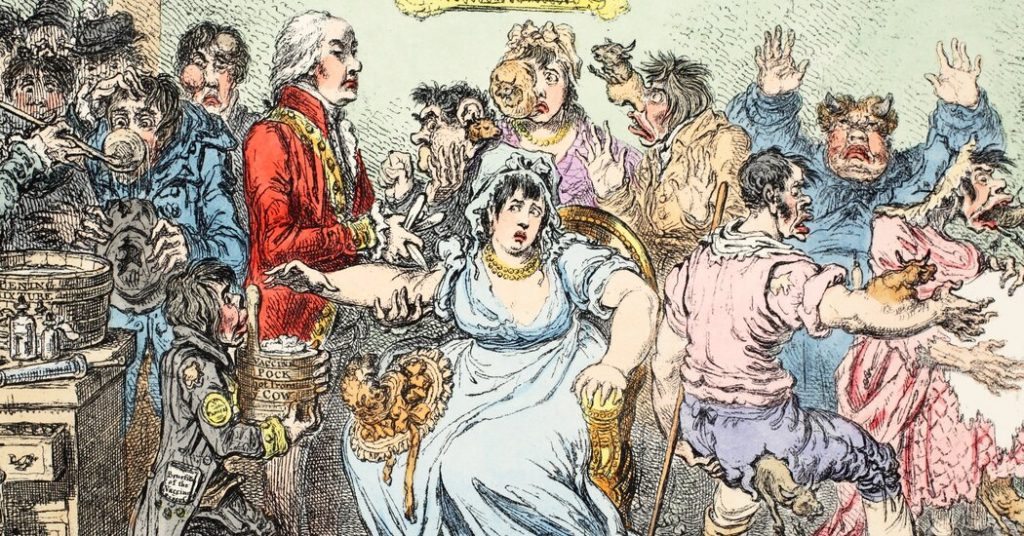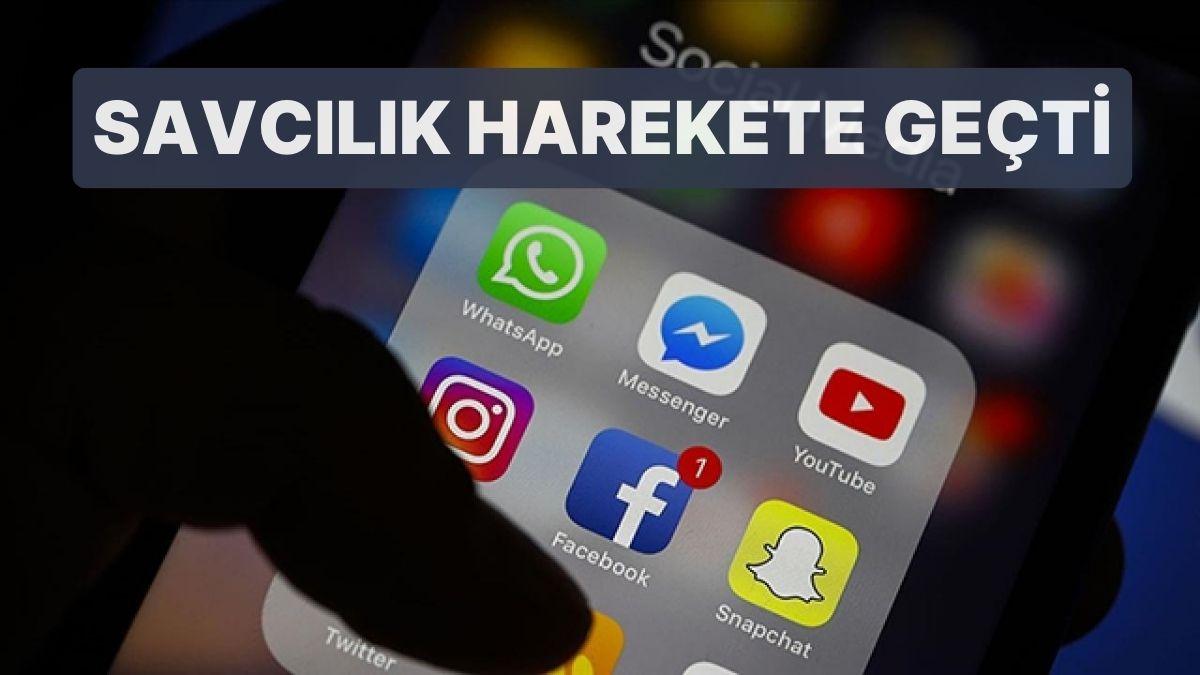LONDON — About 15 months into the coronavirus pandemic, vaccines are, for most of us, the key to getting out of lockdown and returning to lives that we recognize. And with more than a billion doses administered worldwide, there are reasons for hope — even if that hope is not spread evenly.
But for vaccines to work, we need enough people who are willing to take them. There are growing concerns that the United States might soon reach what some experts call the “vaccine wall,” when the problem stops being how to supply enough and starts being how to convince the holdouts — a recent NPR/Maris poll found that one in four Americans would refuse the vaccine if offered. In France, a December poll found that only 40 percent of the population intended to receive it. And rates vary widely around the world.
While I understand the worry that not enough people will take the vaccine to reach herd immunity, I take some comfort in history: Opposition to vaccination is as old as vaccination itself. And despite consistent and often widespread hostility, vaccination campaigns have always, eventually, succeeded.
Take smallpox. When the British physician Edward Jenner introduced his vaccine in 1796, he was promptly hailed as a hero and mocked as a quack. Smallpox had plagued the world for centuries, causing disfiguring pustules, blindness and, in around 30 percent of the population, death. Variolation — deliberate infection with a milder form of the disease — had been used in some parts of the world, but it was complicated and risky.
Jenner had learned that dairymaids became immune to smallpox after catching cowpox, a less dangerous relation of smallpox, from cows. He tested this by infecting the 8-year-old son of his gardener with pus drawn from cowpox blisters. And when Jenner later injected the boy with some smallpox virus, he did not become ill. Smallpox had a vaccine. (How we might feel about Jenner’s approach to “clinical trials,” more than 200 years later, is another issue.)
The vaccine immediately had its skeptics. Clerics warned their congregations about contaminating the purity of the human body with animal matter and condemned it as unchristian. And many of Jenner’s peers who had forged careers on useless but lucrative “cures” for smallpox were quick to denounce it as dangerous. At least one self-described physician claimed that the vaccine would leave children with distinctly bovine features — a rumor that successfully took hold in early-19th-century England.
Some of the criticism was well founded: The procedure was painful. Conditions were less than sanitary, and many patients fell ill with secondary infections and fevers. Several children died of blood poisoning. But in most cases the vaccine saved lives. It quickly became standard medical practice in Britain, Europe and the United States, and by the middle of the 19th century, smallpox was a relatively minor cause of death in Europe.
That success prompted the British government to introduce the British Vaccination Act of 1840, which made vaccination free, followed by another in 1853, which made it compulsory for children on penalty of fines or jail time for parents. Critics immediately derided the latter as a dangerous assault on the autonomy of their bodies and organized themselves into anti-vaccination leagues, which held mass rallies where protesters carried banners, children’s coffins and effigies of Jenner.
The penalties for vaccination dodgers were finally abolished in 1898 and an exemption clause for “conscientious objectors” was introduced, but not before the wave of vaccine skepticism had reached America.
In 1879, following a visit to New York by William Tebb, the founder of The Vaccination Inquirer, a British journal devoted to anti-vaccine propaganda, the Anti-Vaccination Society of America was founded, and activists fought compulsory vaccination laws in several states. In the 1905 case of Jacobson v. Massachusetts, the question finally came before the Supreme Court, where the judges ruled that states had the right to make vaccination mandatory during smallpox outbreaks. The last major outbreak of the disease in the United States was in the early 1900s.
Despite the protests, the lobbying and opposition, enough citizens were vaccinated. Most people’s experience of the smallpox vaccine was protection from a debilitating, disfiguring disease that had killed millions. As it became more common, hearing that family, friends and neighbors had gotten the vaccine and being able to see for oneself that they were fine would have added an important counterpoint to misinformation and made the unknown known. Now of course, smallpox is completely eradicated.
And yet, ever since the time of Jenner, whenever new vaccines have been approved, anti-vaccination campaigns have been part of the response.
Jonas Salk’s polio vaccine arrived in 1955, and recurring polio epidemics were almost completely gone by the early ’60s. But the disease has never been completely eradicated, and it roared back in Pakistan as recently as 2019, after rumors spread that children had fallen ill after receiving the vaccine and many parents refused to let their children receive it.
Measles, mumps and rubella vaccines were approved in the ’60s and were combined into the MMR vaccine in 1971, which became the subject of one of the most infamous vaccine controversies in history.
In the late 1990s Andrew Wakefield published, with 12 others, a now notorious paper in The Lancet that linked the vaccine to neurological conditions, including autism. The problems with the paper were highlighted almost immediately, but it cast a long shadow: MMR vaccination rates plunged and measles outbreaks soared in the years afterward.
Throughout history, critics of vaccines have argued that immunization is more dangerous than disease itself. They have claimed that there are malicious, nonmedical reasons behind vaccinations, such as the profiteering of big pharma and biological schemes intended to reduce the human population. And they have been driven by exquisitely complex and diverse reasons: uncertainty, fear, science skepticism, anti-intellectualism and anti-elitism; sometimes they are motivated by profit.
But although attempts to delegitimize vaccines have posed a serious threat to human health, anti-vaccination movements, at least in the long run, have never succeeded in stopping rollouts. The spread of medical information, which took away most people’s fear of the unknown, as well as the actual experience of the successes of vaccinations, have made populations increasingly less receptive to anti-vaccination messaging — even as communicating those messages has gotten easier.
To put it another way, enough people have accepted vaccines that they have always been effective in immunizing societies. And that’s likely to be true of this pandemic, too.
David Motadel (@DavidMotadel) is a historian at the London School of Economics and Political Science.
The Times is committed to publishing a diversity of letters to the editor. We’d like to hear what you think about this or any of our articles. Here are some tips. And here’s our email: [email protected].
Follow The New York Times Opinion section on Facebook, Twitter (@NYTopinion) and Instagram.








![Steam Envantere Şu An Ulaşılamıyor Hatası [Çözümü] 2024 Steam Envantere Şu An Ulaşılamıyor Hatası [Çözümü] 2024](https://www.gundemtube.com/wp-content/uploads/2023/10/overwatch-2-steame-geliyor-baska-blizzard-oyunlari-da-yolda-vmLvKWNz.jpg)



































































